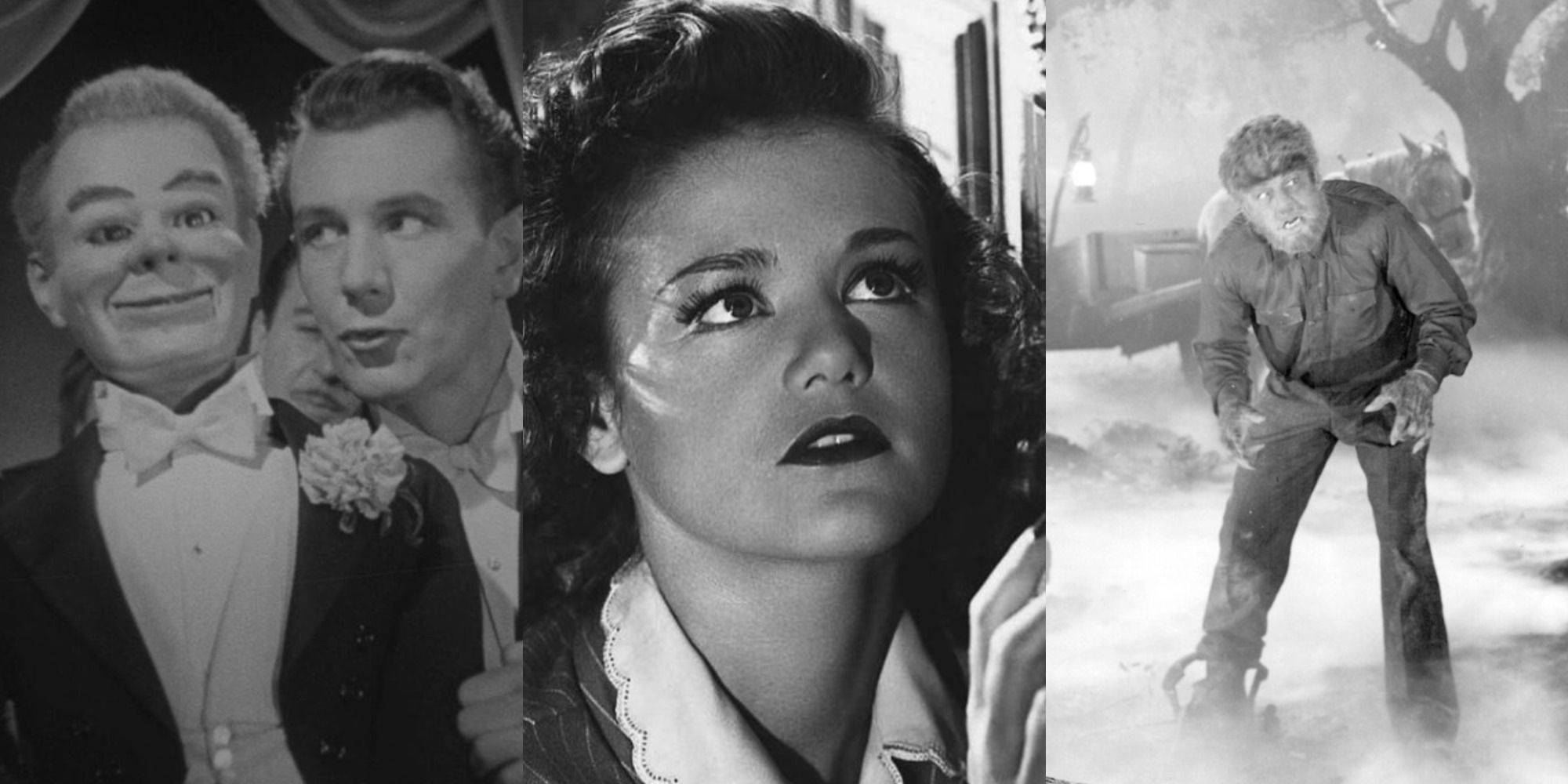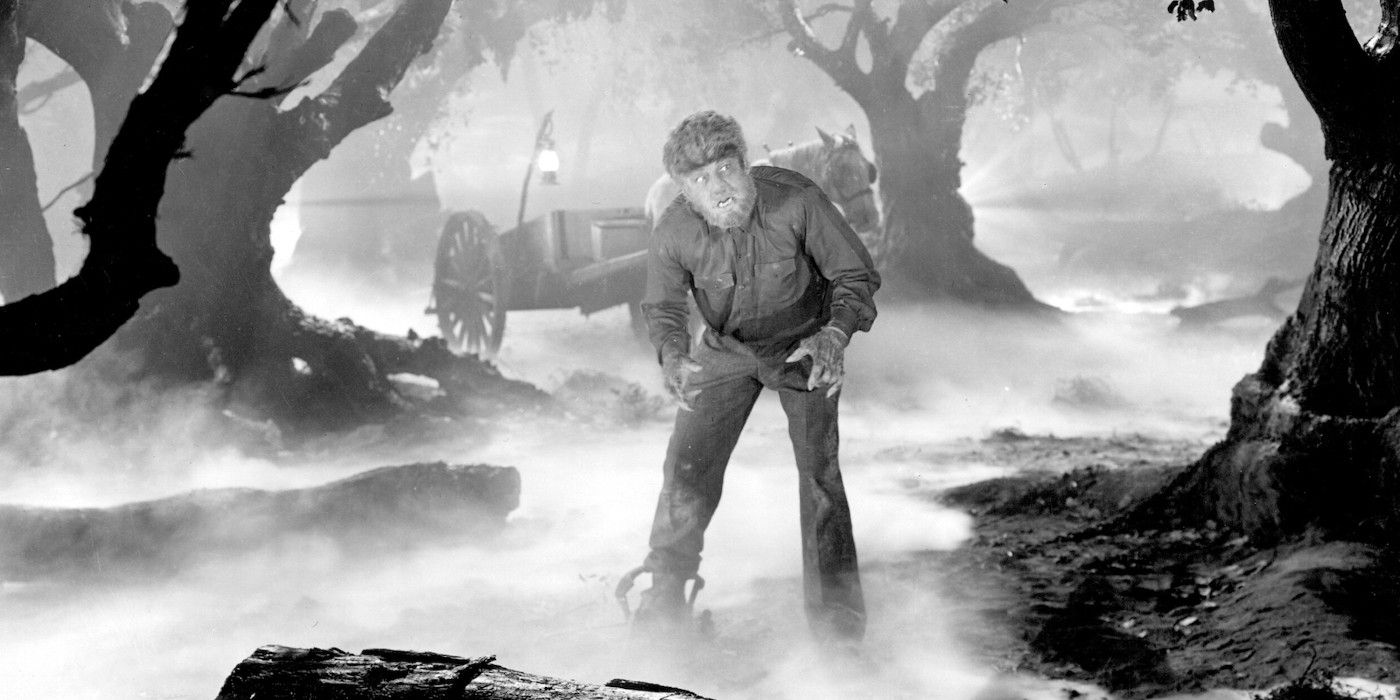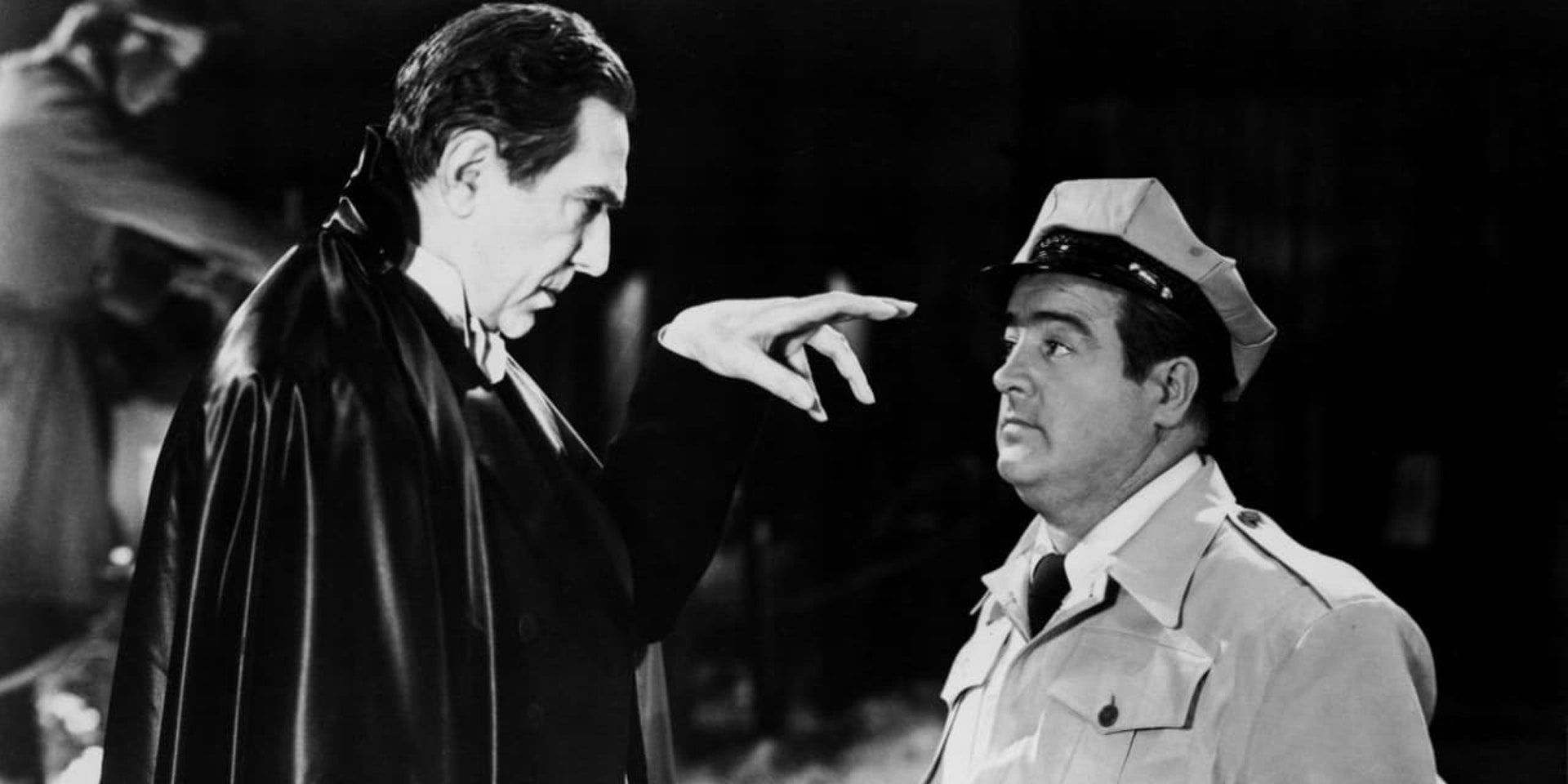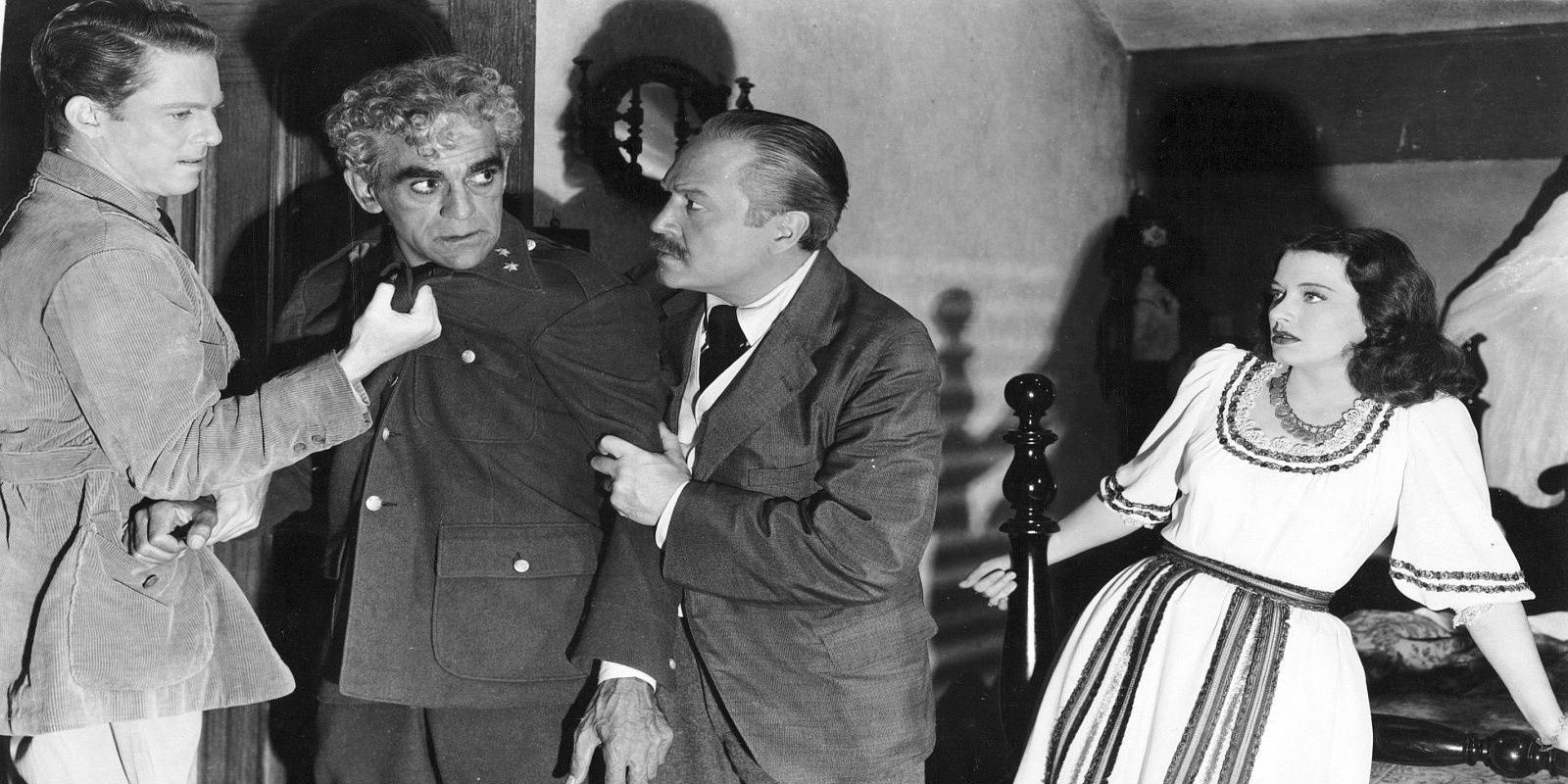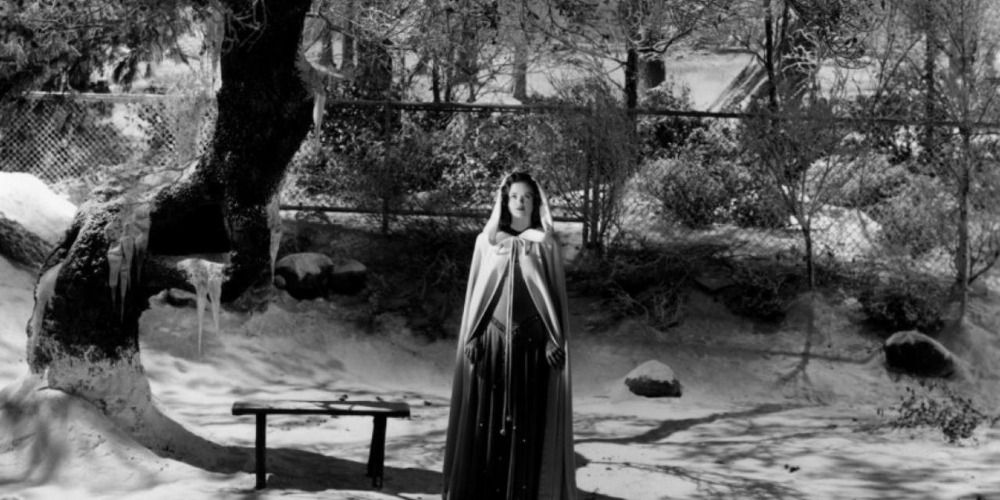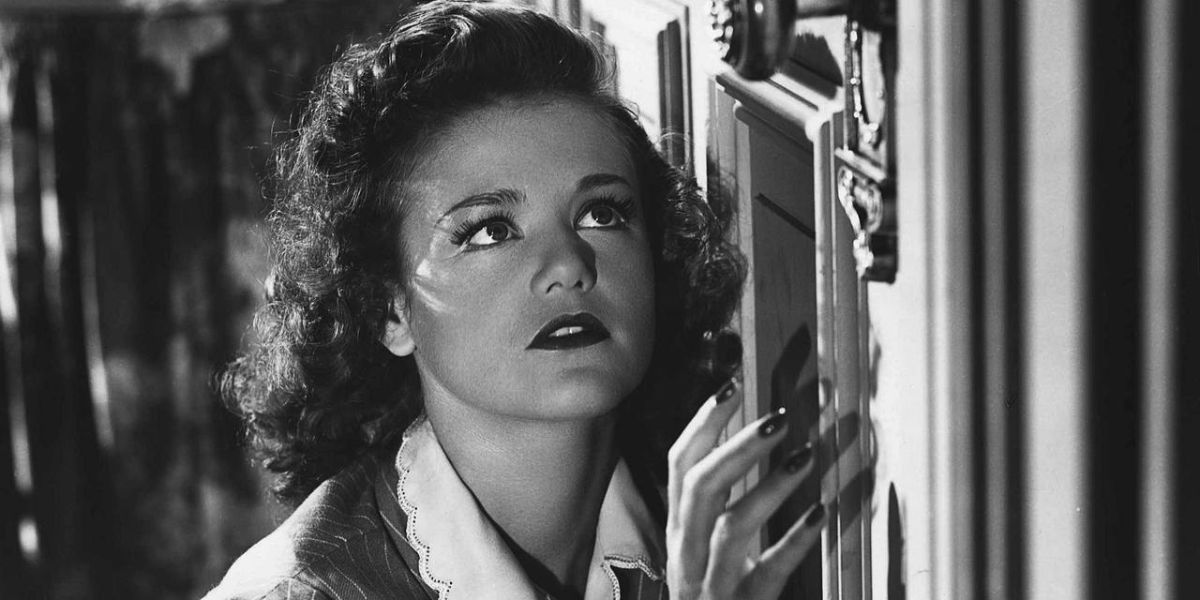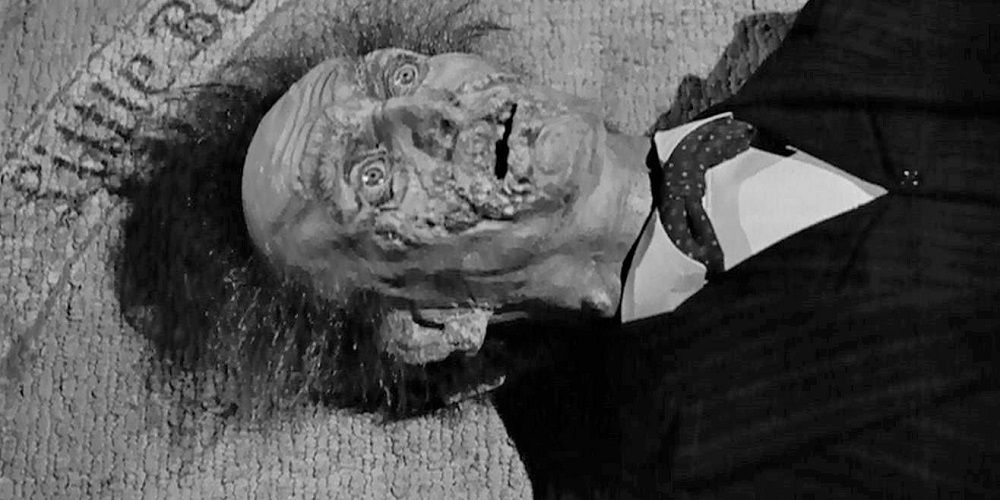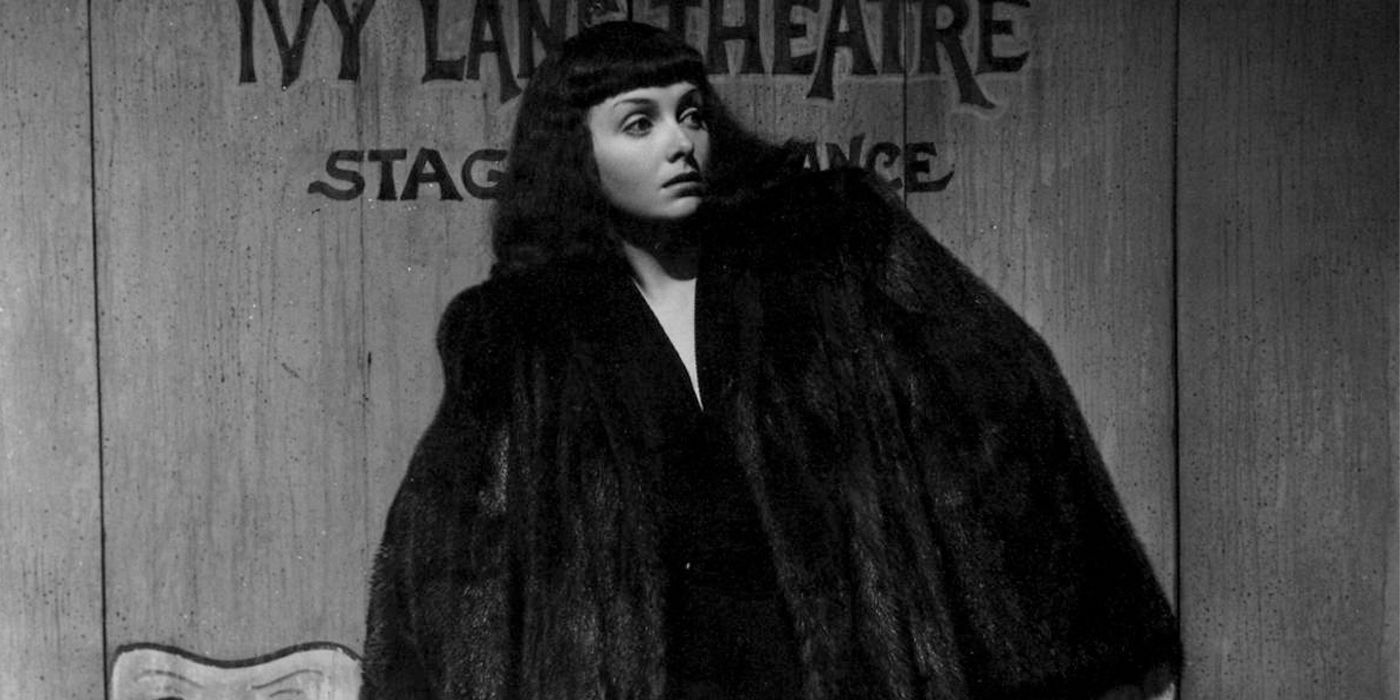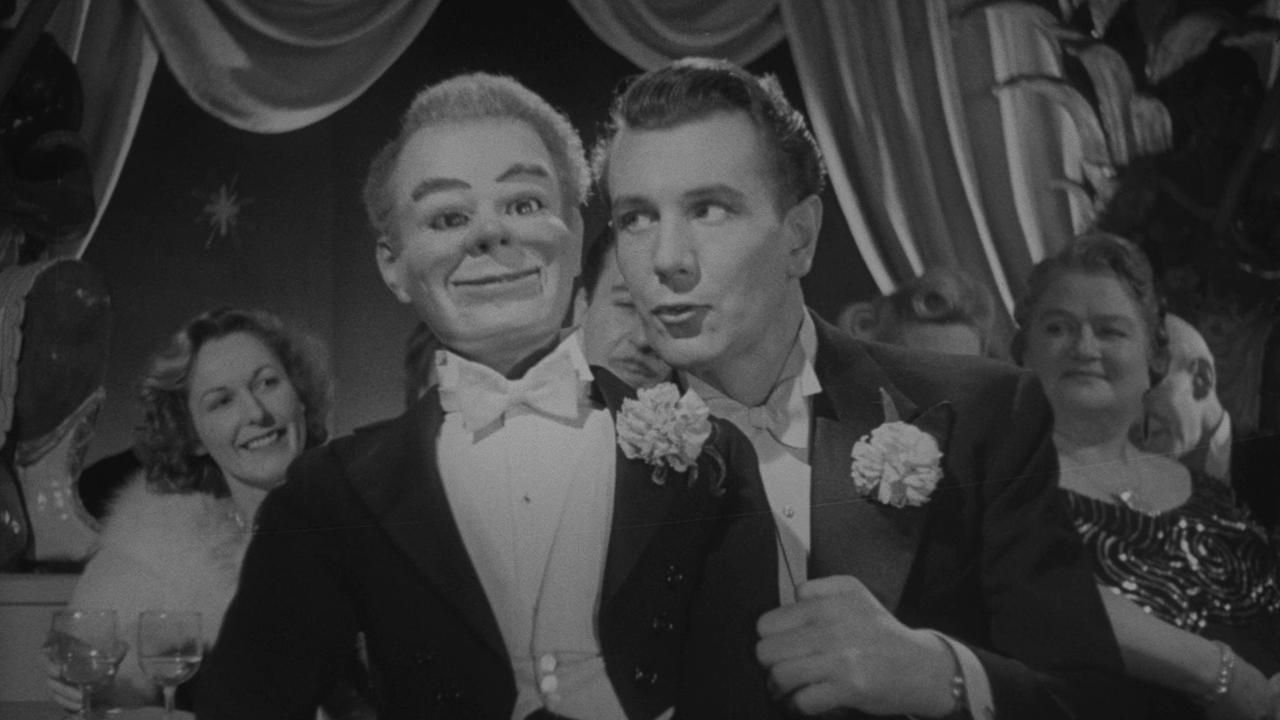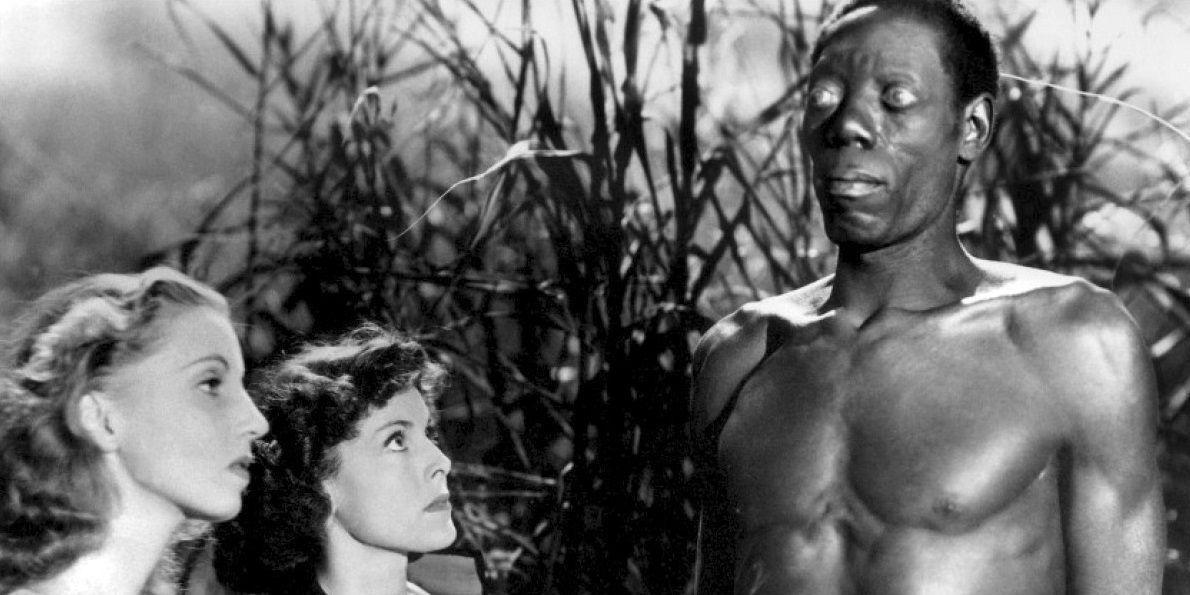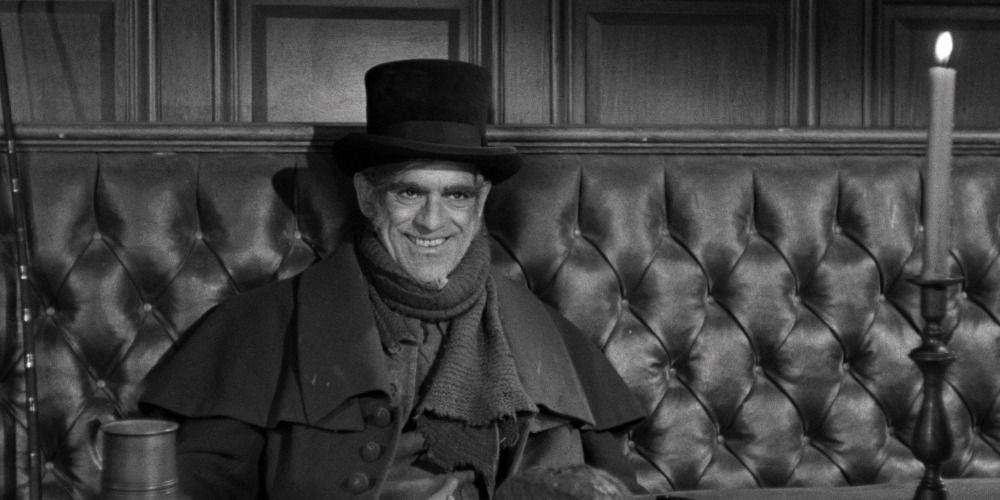Some of the best horror films from the 1940s came out of RKO and were produced by Val Lewton. He was known for letting the viewer imagine their own horrors instead of being explicit, keeping everything in the shadows.
The Universal monsters were still shambling along, with the Wolf Man being added to the cast in 1941, but the series was running out of ideas and going somewhat stale. There might have been too many horrors in the world at the time for the monsters to keep up.
The Wolf Man (1941)
In The Wolf Man, Lawrence Talbot has returned to his ancestral home in Wales to reconnect with his family after years away. As he is settling in and falling for a young woman, he's attacked by a wolf at night. Soon he discovers he was attacked not by a wolf, but by a werewolf. That night, he transforms into a Wolf Man and is now cursed for life.
This is one of Universal's most atmospheric horror films, full of fog and the howls of wolves. Lon Chaney Jr., son of the silent film legend, stars as Talbot/Wolf Man, the part that made him a star. Bela Lugosi, arguably the best Dracula, plays the Gyspy fortune teller that transformed into a wolf, biting Talbot. Claude Raines plays the senior Talbot with his usual talent and style. This is a true horror classic.
Abbott And Costello Meet Frankenstein (1948)
Bud and Lou are two freight handlers, Chic and Wilber, tasked with delivering two very large man-sized crates to the new horror exhibit. They turn out to contain Dracula and Frankensteins' monster. Dracula escapes, planning to put Wilber's newer brain into the monster to fully revive him. Larry Talbot arrives to warn them but transforms into the Wolf Man before he can.
The monsters are together again, with Lugosi back as Dracula for the first time since the original 1931 film. This is one of the best of the Universal monsters movie series and everything about it works. The monsters are treated with respect, not as jokes, the comedy is hilarious and the interplay between Bud, Lou, and the creatures are both frightening and funny. This started a series of horror comedies, with Bud and Lou "meeting" even more monsters.
Isle Of The Dead (1945)
Several people are trapped on a Greek isle during the 1912 war, quarantined by the plague. An army general takes charge of the group, but members are mysteriously dying off. An old peasant woman insists that someone in the group is a demon called a Vorvolaka.
Isle of the Dead is all about the eerie atmosphere of the island and the tension in the group trapped there. Karloff gives a good performance as the General, trying to be logical about the situation and keep the group calm, as people keep dying around them.
Curse Of The Cat People (1944)
The heroine of the first movie died at the end, but she's back as a ghost who befriends Amy, the daughter of her ex-husband and his new wife. The girl also makes friends with Julia Farren, an aging and near-forgotten Broadway actress who is estranged from her own daughter.
This is the sequel to 1942's The Cat People from RKO, produced by Val Lewton with direction by Robert Wise. This film is mostly unrelated to the previous film and has less to do with actual horror than with loneliness and the pull of the past. Ann Carter as Amy the little girl is quite good and the film is well-acted overall, making it a deserving entry for anyone looking for the best horror of the decade.
Cat People (1942)
The Serbian national Irena Dubrovna arrives in NY and falls for Oliver Reed. They marry, even though she has reservations. She believes she is descended from an evil woman who turned into a panther when sexually aroused and killed her lover. She is afraid of intimacy and that she will kill her husband.
This is a film with a surprising sexual undertone for 1943. With Val Lewton films, the viewer usually doesn't get to see an actual monster, so there is no one running around in a cat-person costume. The horror in The Cat People is more psychological, with terrors kept to the shadows and not explicit. There is an expectant unease about the film, with the horrors always just off-screen.
The Picture Of Dorian Gray (1945)
Dorian Gray is a beautiful young man, much praised for his looks and purity. While getting his portrait painted, he meets the wastrel, Lord Henry Wotton. Lord Henry corrupts Dorian telling him to seek only pleasure in life. As he gives in to the corruption, Dorian finds those around him age, but he never does, maintaining his youth. He slowly realizes that his portrait has taken on all the foulness his life has become and that he has lost his soul.
The Picture of Dorian Gray is Oscar Wilde's classic tale of the corruption of a young man and the cruel aftermath he leaves in his wake. George Sanders is great here, playing an even more explicit version of his usual cad. Angela Lansbury plays Dorian's wife, whom he drives to take her own life, and her performance is heartbreaking. This is Hurd Hatfield's second film and he's very good and gets better as he turns evil.
The Seventh Victim (1943)
Mary Gibson is forced to leave her school when her sister disappears. Traveling to New York to look for her, she finds her sister was involved in a satanic cult that is now pursuing the sister for exposing them.
This is a grim thriller with a surprising satanic bent for a film from the '40s. The Seventh Victim is more film noir than true horror and has an atmosphere that is intensely creepy. The cult presented here is made even more unsettling by how calm and reasonable they seem. The viewer and the main character only slowly realize what is happening, and then it's too late.
Dead Of Night (1945)
Dead of Night centers around a group of guests that are invited to an English manor house. An architect has been asked there to look at proposed renovations but seems to know all the guests at the manor, even though they've never met, and he can also predict what will happen next. The guests each tell a tale of supernatural horror.
What follows is are five tales of terror told by guests, including the most famous one, "The Ventriloquist's Dummy." It stars Michael Redgrave as a ventriloquist convinced that his dummy may actually be alive. The ultimate reveal of the architect's nightmare is chilling and was innovative at the time, proving highly influential to later British horror.
I Walked With A Zombie (1943)
Betsy, a young nurse, comes to the West Indies to help a plantation manager care for his wife, Jessica. Jessica had suffered a fever and now is in a trance-like state no one can snap her out of. Even though she has fallen for Paul, Betsy is determined to bring Jessica out of her trance, even if she has to use "voodoo" to do it.
I Walked With A Zombie is another from Producer Val Lewton, set in the West Indies, and it has been called the zombie Jane Eyre for its love triangle plot. Despite many elements of the film not aging well, the film is truly eerie, with a genuinely frightening zombie. There's even a sister folk singer that shows up to sing a threatening song to the main character.
The Body Snatcher (1945)
Dr. Wolfe MacFarlane runs a medical school in Edinburgh in 1831. The school is doing well, except for one thing, it has a lack of bodies for dissection. He hires a resurrectionist, John Gray, to supply him with corpses. When Gray runs out of the freshly dead, he makes his own.
The story of Burke and Hare is a famous one, and here they're combined into a character played by the best Frankenstein, Boris Karloff. Karloff is great, as the sneering, arrogant cabman/body snatcher with a hold over the doctor, and Bels Lugosi is also very good as the doctor's dim assistant, Joseph.

